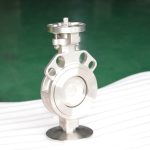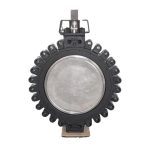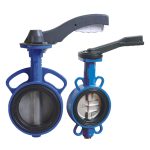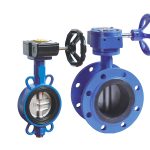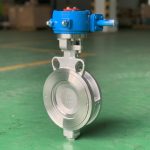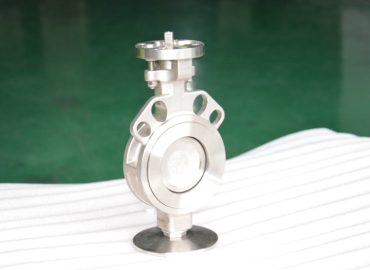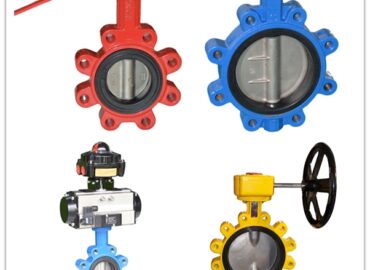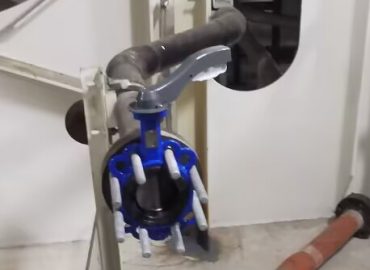Butterfly valves play a critical role in controlling fluid flow in various industrial processes, making it essential to accurately calculate the flow rate through these valves. However, determining the flow rate can be challenging due to variations in pressure and opening angles that influence the fluid dynamics. This blog post explores ways to calculate the flow rate through a butterfly valve under different pressures and opening angles, enabling engineers and technicians to optimize valve performance, improve efficiency, and minimize costs in their operations.
Introduction
Butterfly valves are widely used in a range of industrial applications to regulate and control fluid flow, making it crucial for engineers and technicians to accurately determine the flow rate through these valves for optimal system performance and efficiency. However, calculating the flow rate can be a challenging task due to the influence of various factors such as pressure differentials across the valve and the opening angles of the valve disc. Pressure differentials – the difference in pressure between the inlet and outlet of the valve – can affect the velocity of the fluid passing through the valve, while the opening angle of the valve disc determines the degree of restriction for fluid flow. To account for these variations in pressure and opening angles, several methods can be employed to calculate flow rates, such as empirical formulas and computational fluid dynamics (CFD) analysis. Empirical formulas, based on experimental data and valve characteristics, provide a straightforward approach to estimating flow rates, but may have limitations in accuracy for certain scenarios. On the other hand, CFD analysis offers a more sophisticated and precise method for modeling complex fluid flow dynamics under varying conditions, including different pressures and opening angles. By incorporating these calculation methods into their workflow, engineers and technicians can better understand and optimize the performance of butterfly valves, leading to improved efficiency, reliability, and cost savings in their industrial processes.
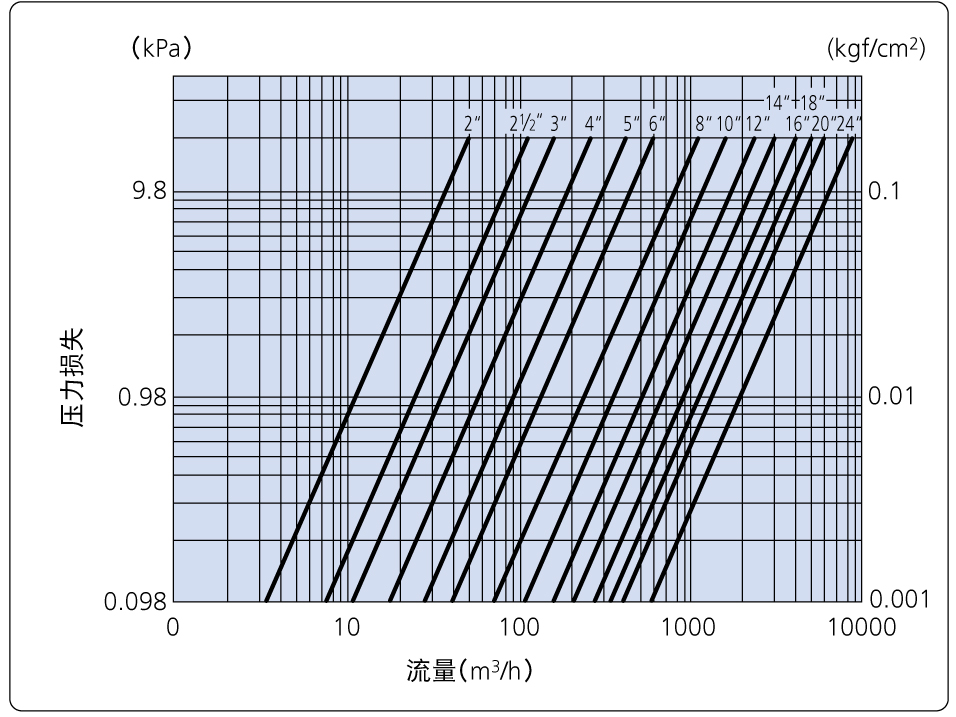
Brief overview of butterfly valves and their applications in industrial processes
Butterfly valves are a versatile and widely used type of flow control device in various industrial processes, known for their simple design, compact size, and cost-effectiveness. Consisting of a disc mounted on a rotating shaft within a pipe, butterfly valves function by rotating the disc to vary the flow area, allowing precise regulation of fluid flow through the system. Their applications span across numerous industries, such as water treatment, chemical processing, oil and gas, power generation, and food and beverage processing. In these processes, butterfly valves are employed to control the flow of liquids, gases, and even slurries, ensuring proper distribution, mixing, and isolation of different media. Due to their ability to operate under a wide range of pressures and temperatures, as well as their suitability for various pipe sizes, butterfly valves have become an indispensable component in modern industrial systems, contributing to the overall efficiency, safety, and reliability of operations.

Importance of calculating flow rate for optimal control and efficiency
Calculating the flow rate through a butterfly valve is an essential aspect of achieving optimal control and efficiency in various industrial processes. Accurate flow rate determination ensures that the correct amount of fluid is distributed, mixed, or isolated as required, maintaining process stability and preventing potential issues such as overflows, pressure surges, or insufficient supply. Additionally, precise flow rate control enables energy-efficient operation of pumps, fans, and compressors, reducing energy consumption and operating costs. It also contributes to the overall safety of industrial systems by preventing excessive fluid velocities that could cause erosion, cavitation, or leakage, leading to equipment damage and potential hazards. In essence, accurate flow rate calculation and control through butterfly valves play a critical role in optimizing system performance, enhancing process efficiency, and ensuring the safety and reliability of industrial operations.
Challenges in determining flow rate through a butterfly valve due to varying pressures and opening angles
Determining the flow rate through a electric butterfly valve can be challenging due to the varying pressures and opening angles that influence fluid dynamics within the system. Pressure differentials, or the difference in pressure between the inlet and outlet of the valve, can cause fluctuations in fluid velocity, making it difficult to obtain consistent flow rate measurements. Moreover, the opening angle of the valve disc, which determines the degree of restriction for fluid flow, adds another layer of complexity to the calculation. As the disc rotates and the opening angle changes, the flow area and resistance to flow within the valve also change, impacting the flow rate. These variations in pressure and opening angles complicate the process of accurately calculating the flow rate through a butterfly valve, necessitating the use of advanced methods such as empirical formulas and computational fluid dynamics (CFD) analysis to obtain reliable results. By addressing these challenges and accurately determining flow rates, engineers and technicians can optimize the performance of butterfly valves, improving the overall efficiency and reliability of their industrial processes.
Understanding the Factors Affecting Flow Rate
A comprehensive understanding of the factors affecting flow rate through a butterfly valve is crucial for accurate calculation and control in various industrial processes. Several key factors contribute to the complexity of flow rate determination, including pressure differential, opening angle, valve size and design, and fluid properties. Pressure differential, or the difference in pressure between the inlet and outlet of the valve, influences the fluid velocity as it passes through the valve, with higher pressure differentials typically leading to increased flow rates. The opening angle of the valve disc is another critical factor, as it determines the degree of restriction for fluid flow. As the disc rotates and the opening angle changes, so does the flow area and resistance to flow within the valve, impacting the flow rate accordingly. Valve size and design also play a role in flow dynamics, with larger valves or specific design features affecting flow patterns and resistance, ultimately influencing the flow rate. Lastly, fluid properties such as viscosity, density, and temperature can significantly affect the flow behavior through a butterfly valve. For instance, highly viscous fluids may exhibit greater resistance to flow, resulting in reduced flow rates compared to less viscous fluids under similar conditions. By taking into account these factors and their interplay, engineers and technicians can better understand the challenges associated with accurately calculating flow rates through butterfly valves and implement appropriate methods to optimize valve performance, ensuring efficiency and reliability in their industrial processes.

Methods for Calculating Flow Rate
Accurately calculating the flow rate through a butterfly valve is essential for optimizing industrial processes, and various methods have been developed to address this challenge. Among these methods are empirical formulas, computational fluid dynamics (CFD) analysis, and experimental testing, each offering its own advantages and limitations. Empirical formulas, which are derived from experimental data and valve characteristics, provide a relatively simple and straightforward approach to estimating flow rates. These formulas typically involve known parameters such as pressure differential, valve size, and fluid properties, allowing for quick calculations. However, their accuracy may be limited in certain scenarios, particularly when dealing with complex fluid dynamics or unusual operating conditions. In contrast, CFD analysis offers a more sophisticated method for modeling and predicting fluid flow behavior under various conditions, including different pressures, opening angles, and fluid properties. By simulating the flow dynamics within the valve, CFD analysis can provide highly accurate flow rate predictions, as well as insights into other performance parameters such as pressure drop and velocity distribution. However, this method can be computationally intensive and may require specialized expertise to implement effectively. Experimental testing, on the other hand, involves conducting physical tests on the valve under controlled conditions to directly measure the flow rate. While this method can yield accurate results, it can be time-consuming and resource-intensive, making it less feasible for routine calculations or large-scale applications. Ultimately, selecting the most appropriate method for calculating flow rate through a butterfly valve depends on factors such as the specific application, available resources, and desired accuracy, with each method offering its own set of advantages and challenges.
Empirical Formulas
Empirical formulas are mathematical equations derived from experimental data and valve characteristics that provide a relatively simple and straightforward approach to estimating flow rates through butterfly valves. These formulas typically involve known parameters such as pressure differential, valve size, fluid properties, and opening angles, allowing for quick calculations and predictions of flow behavior under various operating conditions. Empirical formulas have the advantage of being easy to use and require minimal computational resources, making them suitable for a wide range of applications in industrial processes. However, their accuracy may be limited in certain scenarios, particularly when dealing with complex fluid dynamics or unusual operating conditions, as they may not fully account for all the intricacies of real-world flow phenomena. Despite these limitations, empirical formulas remain an important tool in the engineer’s toolbox for estimating flow rates and optimizing the performance of butterfly valves in diverse industrial systems.

Computational Fluid Dynamics (CFD) Analysis
Computational Fluid Dynamics (CFD) analysis is a sophisticated method for modeling and predicting fluid flow behavior within butterfly valves and other flow control devices. By simulating the flow dynamics under various conditions, such as different pressures, opening angles, and fluid properties, CFD analysis can provide highly accurate flow rate predictions, as well as insights into other performance parameters such as pressure drop and velocity distribution. This advanced technique relies on numerical algorithms and computational resources to solve complex equations governing fluid motion, heat transfer, and chemical reactions, offering a comprehensive understanding of flow phenomena within the valve. While CFD analysis can be computationally intensive and may require specialized expertise to implement effectively, its ability to accurately predict flow behavior makes it a valuable tool for engineers and technicians working with butterfly valves in industrial processes. The insights gained from CFD analysis can inform the design, selection, and optimization of butterfly valves, ultimately enhancing the efficiency, safety, and reliability of the systems in which they are employed.
Incorporating Pressure and Opening Angle Variations
Incorporating pressure and opening angle variations is crucial for obtaining accurate flow rate calculations and predictions through butterfly valves in industrial processes. Pressure differentials, or the difference in pressure between the inlet and outlet of the valve, can cause fluctuations in fluid velocity, making it challenging to obtain consistent flow rate measurements. As pressure conditions change within a system, the flow rate may vary accordingly, necessitating a comprehensive understanding of this relationship to optimize valve performance. The opening angle of the valve disc is another critical factor that must be considered, as it determines the degree of restriction for fluid flow. As the disc rotates and the opening angle changes, the flow area and resistance to flow within the valve also change, impacting the flow rate. By accounting for these variations in pressure and opening angles, engineers and technicians can more accurately predict flow rates and make informed decisions regarding the selection, design, and operation of butterfly valves. Advanced methods such as computational fluid dynamics (CFD) analysis and empirical formulas can be particularly useful for incorporating these variations, as they allow for the simulation of flow behavior under different conditions and the development of mathematical relationships between pressure, opening angle, and flow rate. By considering the interplay of these factors, it becomes possible to achieve greater control over flow rates, enhance the efficiency and reliability of industrial processes, and ensure optimal performance of butterfly valves in a wide range of applications.
Case Studies and Examples
Case studies and examples play a vital role in demonstrating the practical applications and benefits of accurately calculating flow rates through butterfly valves in various industrial processes. These real-world scenarios provide valuable insights into the challenges faced by engineers and technicians, as well as the solutions that have been implemented to overcome them. For instance, a case study in the water treatment industry might highlight the importance of precise flow rate control for maintaining optimal water quality and efficient plant operation. In this example, the use of computational fluid dynamics (CFD) analysis or empirical formulas could be employed to accurately predict flow rates and optimize the performance of butterfly valves under varying pressure conditions and opening angles. Another example could involve the oil and gas sector, where safety and efficiency are paramount, and accurate flow rate control is critical for preventing leaks and ensuring smooth process operations. In such a case, experimental testing and advanced simulation techniques might be used to validate the performance of butterfly valves under extreme pressure differentials and fluid properties, leading to improved valve design and selection. Similarly, in the pharmaceutical and food processing industries, precise flow rate control is crucial for ensuring product quality and consistency, making accurate flow rate calculations essential for optimizing production processes. By examining these case studies and examples, engineers and technicians can gain a deeper understanding of the practical implications of flow rate calculations and their impact on the performance and reliability of butterfly valves in diverse industrial settings. Furthermore, these real-world scenarios can serve as a source of inspiration for developing innovative solutions and best practices for the effective management of flow rates and the optimization of overall system performance.
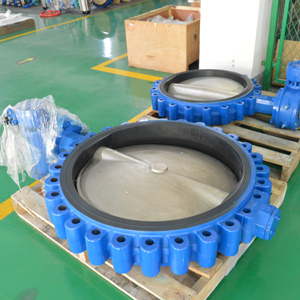
Best Practices and Recommendations
Adopting best practices and recommendations for calculating flow rates through butterfly valves is essential for ensuring optimal performance, efficiency, and reliability in various industrial processes. To begin with, it is crucial to have a thorough understanding of the factors affecting flow rate, such as pressure differential, opening angle, valve size and design, and fluid properties. By considering these factors, engineers and technicians can more accurately predict flow behavior and make informed decisions regarding the selection, design, and operation of butterfly valves. In addition, selecting the most appropriate method for calculating flow rate, whether it be empirical formulas, computational fluid dynamics (CFD) analysis, or experimental testing, is critical for achieving the desired accuracy and reliability. Each method has its advantages and limitations, and choosing the right one depends on factors such as the specific application, available resources, and desired level of precision.
Moreover, regular monitoring and maintenance of butterfly valves are essential for ensuring their continued performance and longevity. This includes checking for wear and tear, cleaning, and lubricating the valve components as needed, as well as calibrating the valve actuators to maintain precise control over the opening angle. Furthermore, investing in training and professional development for personnel involved in valve operation and maintenance can help ensure that they have the necessary skills and knowledge to effectively manage flow rates and address any issues that may arise.
Lastly, staying up-to-date with the latest advancements in valve technology, simulation techniques, and industry best practices is crucial for maintaining a competitive edge and continually improving the performance of butterfly valves in industrial processes. By attending conferences, participating in professional organizations, and collaborating with experts in the field, engineers and technicians can gain valuable insights into emerging trends and innovations, which can be applied to enhance the efficiency, safety, and reliability of their own systems. By implementing these best practices and recommendations, companies can optimize the performance of their butterfly valves, achieve greater control over flow rates, and ultimately ensure the success and sustainability of their industrial processes.
Conclusion
In conclusion, accurately calculating the flow rate through a electric butterfly valve for different pressures and opening angles is not only possible, but also crucial for optimizing industrial processes and ensuring the efficiency and reliability of various systems. By considering the factors that influence flow rate, such as pressure differential, opening angle, valve size and design, and fluid properties, engineers and technicians can make informed decisions about the selection, design, and operation of butterfly valves.
There are several methods available for calculating flow rates under varying conditions, including empirical formulas, computational fluid dynamics (CFD) analysis, and experimental testing. Each method has its advantages and limitations, and the choice depends on factors such as the specific application, available resources, and the desired level of accuracy. Empirical formulas offer a simple and straightforward approach, while CFD analysis provides more sophisticated modeling and accurate predictions. Experimental testing can yield highly accurate results, albeit at the cost of being time-consuming and resource-intensive.
Incorporating best practices and recommendations in flow rate calculations is essential for achieving optimal performance and reliability. This includes regular monitoring and maintenance of butterfly valves, investing in training and professional development for personnel, and staying up-to-date with the latest advancements in valve technology and industry best practices.
Case studies and examples from various industries highlight the practical implications of flow rate calculations and their impact on the performance of butterfly valves. These real-world scenarios provide valuable insights into the challenges faced by engineers and technicians, as well as the solutions that have been implemented to overcome them.
Ultimately, there is no one-size-fits-all solution for calculating flow rates through butterfly valves under different pressures and opening angles. However, by understanding the factors that influence flow behavior, selecting the most appropriate method for calculation, and adhering to best practices, it is possible to achieve greater control over flow rates and ensure the success and sustainability of industrial processes.
Recap of the importance of understanding flow rate through butterfly valves under different pressures and opening angles
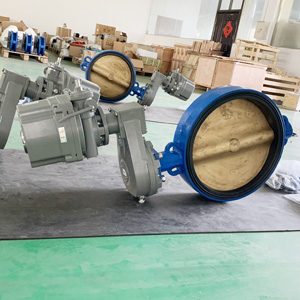
In recap, understanding the flow rate through butterfly valves under different pressures and opening angles is of paramount importance for optimizing industrial processes and ensuring system efficiency and reliability. Accurate flow rate calculations enable engineers and technicians to make informed decisions about valve selection, design, and operation, ultimately enhancing the performance of various systems. By considering factors such as pressure differential, opening angle, valve size and design, and fluid properties, and employing appropriate methods like empirical formulas or computational fluid dynamics (CFD) analysis, one can effectively predict and control flow behavior. Furthermore, adhering to best practices and staying up-to-date with advancements in valve technology contributes to improved flow rate management, fostering the success and sustainability of industrial processes across diverse sectors.
Encouragement to continuously improve and optimize valve performance for increased efficiency and cost savings
It is essential for engineers and technicians to continuously strive for improvement and optimization of valve performance, as this directly contributes to increased efficiency and cost savings in industrial processes. By staying current with advancements in valve technology, simulation techniques, and industry best practices, professionals can identify opportunities for enhancing the performance of butterfly valves and other flow control devices. This proactive approach to performance optimization not only leads to more precise flow rate control but also ensures the longevity and reliability of the valves, minimizing downtime and maintenance costs. Furthermore, optimizing valve performance promotes energy conservation and reduces waste, ultimately benefiting both the environment and the bottom line. Embracing a culture of continuous improvement and innovation in valve performance demonstrates a commitment to excellence, positioning companies at the forefront of their respective industries and paving the way for sustainable success.




